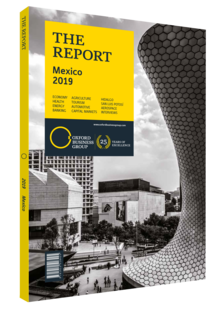José Zozaya, CEO, Kansas City Southern México: Interview

Interview: José Zozaya
How competitive and efficient are Mexico’s railroads compared to those in the US and Canada?
JOSÉ ZOZAYA: According to an OECD study on the global railway industry, Mexico’s network is one of the most efficient in Latin America. It represents a key element for competitiveness and economic growth by connecting the most important logistics centres in the country with the US and Canada, and also serving trade flows from Asia. Mexican industry requires a high capacity railway, advanced technology, quality infrastructure, quality service and freight transported under strict security controls. Also, in order to improve operations, companies have to implement administrative and physical measures to streamline border crossings, like having an international crew so that they do not have to change trains at the border. This could increase capacity by 25-30% without laying a single brick. Last but not least, the sector needs to keep building stronger infrastructure that will allow all to create smoother and more efficient connections between trains.
In what ways does the health of the railway network reflect that of the wider economy?
ZOZAYA: The railway is the economy’s thermometer. When declining trends occur in the market we are the first ones to notice because we handle key supplies. We immediately detect a decline in industrial activity in the form of falling volumes. We also notice a recovery as volumes start increasing. The railway network’s clients are varied, so if one from any sector decreases activity, a client from another may increase services to compensate, providing a broader picture about what is going on. Likewise, our progress affects the economy; for example, thanks to its operating system and its infrastructure, such as intermodal facilities, the north-south flow of goods has been strengthened, so the rail system is now in a better position to receive and transfer the flow of goods between Asia and the Americas. Mexico cannot have an inefficient rail network, as this would result in a less competitive supply chain. The train is one of the most efficient freight modes of transport, both for its effectiveness in travel times, and for its safety and environmental footprint. The railway is a key link in the logistics chain in Mexico, and generates fewer carbon dioxide emissions, about 75% less, compared to trucks.
What impact could the Maya Train and Trans-Isthmus railway projects have on cargo transport?
ZOZAYA: Both are visionary projects and will compete with one another. The Trans-Isthmus railway is based on the same concept as the Panama Canal, a critical link connecting two oceans. Joining the oceans through rail is viable only with further investments in port infrastructure. Raising a ship’s draught is key to allowing large ships to enter and exit, which must also be done for adjacent rail terminals. It is also important to reinforce the tracks so that the slopes and curves allow for the transport of heavier freight. In addition to comprehensive port infrastructure and an extensive network of rail tracks, the Trans-Isthmus zone must attract enough industry to make the project sustainable. In general, we expect freight prices to drop, which will generate healthy competition.
The Maya Train will bring rail tracks to the country’s most remote areas. Although critics say that the lack of inhabitants and industry in the region could make the railway economically unviable, we can look at Monterrey and Guadalajara as examples: these areas previously had little industry, but they are now blooming economic centres. It took both investment and vision to build up their economies. The Maya Train will be the precursor that brings about more infrastructure, industry and jobs, providing an incentive to industrialise the entire country.
You have reached the limit of premium articles you can view for free.
Choose from the options below to purchase print or digital editions of our Reports. You can also purchase a website subscription giving you unlimited access to all of our Reports online for 12 months.
If you have already purchased this Report or have a website subscription, please login to continue.

